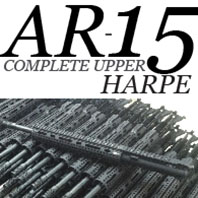Matching bullet weight to twist rate is vital for maximum accuracy. How do you know which twist rate is right for you?
Brad Fitzpatrick
In the 1960’s, when the 5.56×45 and the accompanying AR platform debuted, but rifles had barrels with twist rates of 1:14 inches, or one full rifling twist for every 14 inches of barrel. That’s because at that time the standard choice in 5.56 ammo was a 55 grain FMJ projectile. And although the 50-55 grain bullet is still a versatile and effect varmint hunting bullet, for military and long-range purposes most ARs have switched to heavier bullets. That means that the barrels must switch, too.
Today you won’t find very many 1:14 barrels because, frankly, there isn’t a whole lot of demand for them. They’re good at stabilizing lighter bullets, but they won’t stabilize heavier projectiles. For that reason, the 1:12 is about the slowest AR barrel you’ll see today. Because there’s a “sweet spot” when combining bullet and barrel twist rate, you’ll need to have an idea what type of ammo you’re going to be shooting. If you’re going to limit yourself to 55 grains or less, the 1:12 will work.
But why give up the 5.56/.223’s blessed versatility? Why not get the most out of your rifle?
In that case, you’re probably going to want to look for a faster twist rate that stabilizes larger bullets. 1:10 and 1:9 twist barrels, which work just fine with 55 grain projectiles but will also handle heavier 60, 62, and 69 grain bullets. These two barrel twist rates are situated in the middle of the pack and, generally speaking, allow you to shoot a wider variety of bullets than any slower-twist barrels. But as you go beyond 1:9, barrels do better with heavier bullets and don’t perform as well with lighter ones. Just as slow-twist barrels won’t stabilize heavy bullets properly, fast-twist barrels will sometimes overstablize, which reduces bullet stability and results in poor performance. For that reason, the faster twist barrels—1:8 and 1:7—are best with heavy bullets. 1:8 twist barrels will stabilize bullets up to 80 grains, and 1:7 tubes will actually stabilize heavy, long-for caliber, aerodynamic bullets up to 90 grains.
So, what’s right for your AR? That depends. If I were building a strict varmint gun—something that would almost exclusively fire bullets in the 55 grain and below range—I’d opt for a 1:10 twist rate, which has proven effective for me in the past. The 1:10 is highly versatile and will work with most bullets, from 55 grain polymer tip varmint bullets on up to heavier boat-tails for a little extra reach. If I planned to shoot a bit of every type of ammunition I’d go for a 1:9 or 1:8, which would allow me to take advantage of a broad range of bullets. If I were building a long-range target gun and knew I’d be using bullets from 77 grain on up, well, I’d have a 1:7 twist.
If you’re building (or buying) a 5.56×45 AR then it will help to know twist rates. You’ll understand how your gun and ammunition work together, and you’ll be able to get the most out of your loads.







